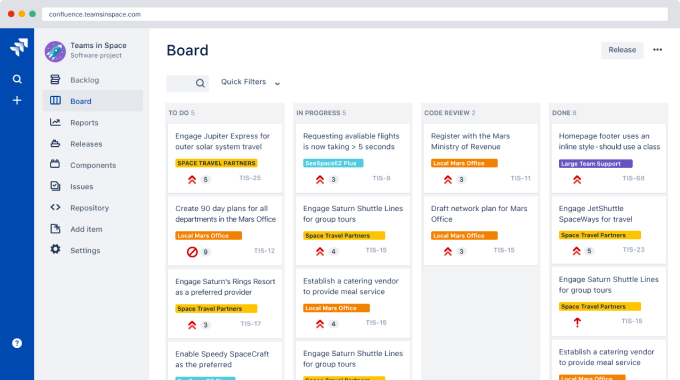Bug Bash Testing
Bug bash in software testing is a manual and collaborative software testing practice that is focused on discovering bugs in a software application through exploratory testing. The term “bug bash” suggests that participants like developers, QA engineers, product managers, and other stakeholders are essentially “bashing” or aggressively looking for bugs.
How bug bash testing works & its importance
Let us take a look at how bug bash testing is being implemented within the industry.
1. Planning & preparation
- Set objective: The objective of the bug bash event is clarified in advance. For example, to test new features, focus on a specific module, or discover user experience flaws.
- Time box: This is scheduled for a specific duration. Depending on the complexity, it may be 1–4 hours or 1 day.
- Environment configuration: Ensure all the participants access the same versions of the software or environment, e.g., staging environment.
- Equip with quality tools: Provide defect logging and tracking tools such as Jira, Bugzilla, and Trello so that participants can log defects/issues as they discover them during the event.
2. Execution
- Variety of participants: Bug bash is not limited to test engineers and typically involves a broader team, such as developers, designers, product managers, and even stakeholders.
- Exploratory testing: Participants use and assess the application from their perspective, trying to reproduce real-life use cases or workflows.
- Collective collaboration: Communication among the team is vital, and if a participant discovers an issue, other participants are encouraged to reproduce the bug/issue using the same or different flows.
3. Reporting and tracking
- Once the bugs are identified, participants log them using bug-tracking tools. The issues/defects are then prioritized based on the severity, and the discovered issues will be reviewed, resolved, and retested.
Importance of bug bash testing
- Collective effort: Bug bash does not limit just testers to participate; the collective experience of different roles helps identify a wide variety of bugs.
- Exploratory testing: Since exploratory tests often support unpredictable interactions, they may help effectively reveal edge cases or non-obvious bugs.
- User experience focus: As bug bash includes non-technical and user-centric stakeholders, it can lead to insights on how well the product fits its target audience.
- Speed: Since bug bash is time-boxed, it forces the team to focus on high-impact bugs within a short period of time, which leads to faster discovery of bugs and issues.
- Cost-effective: Bug bash helps discover bugs often missed by the structured test process. Thus, it can be stated as a cost-effective mechanism for discovering bugs, as it prevents costly post-release bugs and reputation damage.
Now that we understand how it is implemented let us discuss the significant advantages of using Bug bash tests.
Benefits of bug bash testing
- Diverse perspectives: Including team members from different disciplines will result in different perspectives, which will be beneficial to the discovery of defects as each looks at it from different angles and with a variety of expertise, such as technical, functional, and user-centric.
- Increased test coverage: As the software is tested by many participants, it leads to extensive application coverage in a short time span.
- Early issue detection: Typically, bugs overlooked by the development team are identified during a bug bash event. Early detection of these bugs saves significant costs of fixing bugs later in the development lifecycle.
- Team collaboration: Bug bash events promote teamwork, and the interactions across these multiple roles help build team collaboration to ensure a high-quality end product.
It is equally important to understand the disadvantages while knowing its benefits. Let’s take a look.
Drawbacks of bug bash testing
- Unstructured testing: The informal nature of bug bash may lead to unorganized or incomplete testing as the participants during the bug bash might mainly focus on identifying easy bugs as opposed to complex issues/defects.
- False positives: There is a high risk of reporting duplicate bugs or non-bugs due to the large number of participants in a bug bash. It will be tough to manage and filter these reports as they can become overwhelming.
- Lack of depth: As this practice does not employ extensive testing or detailed analysis, participants may not have sufficient time or an incentive to further investigate the root cause for the issue/defect.
- Time-consuming: This depends on the number of participants and the bugs they discover, as more bugs that get discovered would require the developers’ immediate attention, which may require more time.
- Limited to known areas: The participants usually focus on their areas of expertise, which will result in discovering issues that are only obvious to them. This means that certain parts of the software may be overlooked, and the testing might not be comprehensive.
Conclusion
Bug bash testing is an essential technique in the software development process. It helps uncover defects rapidly in a time-boxed testing session. It is also one of the most cost-effective ways to enhance the software quality prior to releasing it into production.
Though it has certain limitations, the significant benefits of bug bash tests often outweigh the drawbacks. The success of a bug bash depends on effective planning, proper execution, clear communication, and a well-organized post-event process to track, trace, and resolve the identified bugs. When implemented well, it can be an excellent way to enhance software quality and ensure a better user experience.


